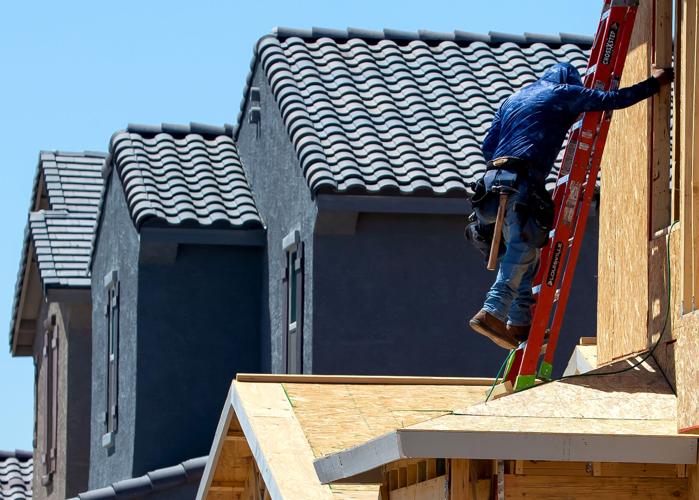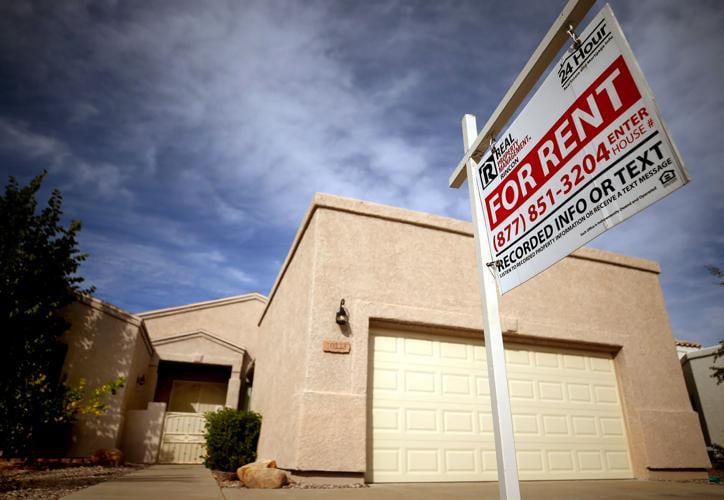Home building is on an upswing in Tucson, as buyers accept the reality of higher interest rates and existing homeowners continue hanging onto their low rates by staying put.
Permits for new homes were up almost 130% in the first part of the year, compared to the same time last year — 341 versus 784 this year.
The average new home price is now over $430,000, but holding steady and not soaring as prices are in some markets.
The resale market remains flat with an average sales price of $409,000.
The classic supply-demand scenario is putting pressure on the rental market, which is housing potential homebuyers longer as they wait for their opportunity to buy.
And a home purchase is likely to take up a higher percent of a resident’s income than before the pandemic.
At about 32%, the latest expense-to-wage ratio sits above the 28% level preferred by mortgage lenders and marks one the highest points over the past decade, according to a report from ATTOM, a national curator of real estate data.
Another contributing factor to home prices remaining high is built-for-rent communities, known as BFR, where developers buy swaths of land to build single family homes that are not for sale.
Currently in the Tucson area there are 16 of these BFR projects in the works that will total close to 2,500 homes exclusively for renters, data from local housing analyst R.L. Brown Reports shows.

Tucson’s rental market is housing potential homebuyers longer as they wait for their opportunity to buy.
“Housing prices are a function of the cost of labor and materials, the cost of land, the cost of financing, the cost of alternative housing, the profit desires of the builder-land developer-present owner-financing, and a myriad of other factors, including zoning and building restrictions,” said Jim Daniel, the report’s publisher.
He said the ability of homebuilders to simply reduce those prices is unrealistic.
“The strong demonstrated demand for housing in Tucson provides little incentive for cost or price reductions, or better said, without cost reductions, there is little or no incentive to reduce housing prices,” Daniel said.
Strong demand for new homes is coming from people relocating from markets where housing prices are much higher than they are in the Tucson area.
Job creation and climate will continue to drive new residents to the area.
To build less expensive homes, homebuilder concessions can include smaller homes that are closer to neighbors and limited amenities, such as resort-style pools, gyms and clubhouses.
“Builders who can effectively produce new housing priced in the $300,000 range will find solid demand in most geographic areas of the region,” Daniel said. “Builders who can produce new housing priced below that range and be competitive with the BFR products growing in favor in Tucson can expect a strong response for properly conceived products.”
Assistance programs aim to build homeownership
Housing affordability is on the radar of local and state government officials.
City of Tucson and Pima County programs offers rental and down payment assistance to residents and the Arizona Department of Housing recently rolled out a new program to increase homeownership called “Arizona is Home.”
The $13 million program consists of enhanced down payment assistance and mortgage interest rate relief to qualifying low-to-moderate income first-time homebuyers and will assist approximately 500 homebuyers statewide.
“As someone who has struggled to make mortgage payments myself, I know how owning a home can help build a strong financial foundation and anchor families to the communities they love,” Gov. Katie Hobbs said in announcing the initiative. “This new program will offer the freedom and independence that comes with homeownership that has been eluding many deserving Arizonans across the state.”
The housing department awarded grants to two home lending organizations, Chicanos Por La Causa and Trellis, to provide enhanced down payment assistance and mortgage interest rate relief to low- and moderate-income first-time homebuyers across the state.
In addition, the Arizona Industrial Development Authority has created a new loan product specifically targeted at first-time homebuyers in rural counties to provide down payment assistance and rate relief.
“Our mission at ADOH is to make homeownership available to the largest number of Arizonans possible and ensure no one is priced out of our state,” said ADOH Cabinet Executive Officer Joan Serviss. “This program will help lower- and middle-income Arizona, in both metro and rural areas, succeed in becoming homeowners for the first time.”
Details on qualifying for the program can be found at housing.az.gov/general-public/programs-for-homebuyers
“Arizonans love our state and want to build their lives here,” Hobbs said. “The ‘Arizona is Home’ program will bring homeownership to more people and provide assistance at a time when high home prices are keeping the American dream from too many.”






